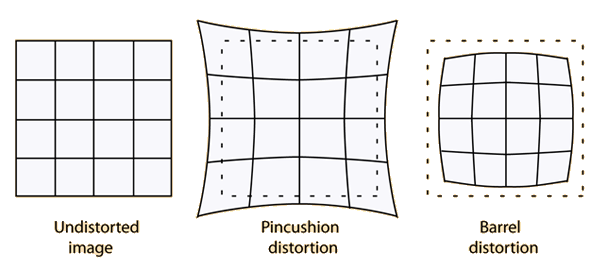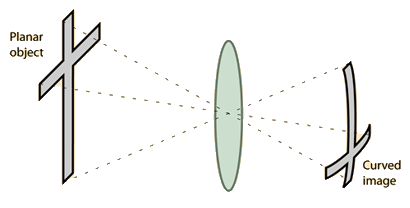Distortion
Other than distortions from lens imperfections, certain distortions occur from the geometry of the lens. The barrel and pincushion distortions below can be readily seen in the image formed by a thick double convex glass lens. They are the reason for a practical limitation in the magnification achievable from a simple magnifier. These distortions are mimimized by using symmetric doublets such as the orthoscopic doublet and eyepieces such as the Ramsden eyepiece.

Distortion occurs when the linear magnification is a function of the off-axis distance. The linear magnification is a function of the focal length, so if the focal length is different for different areas of the lens, the magnification will change. In the absence of other aberrations, it can be observed that all parts of the image are sharply focused, but show distortion because of the varying magnification. If there is a positive change in the magnification with distance, then the image will be distorted outward with the most distant parts of the image displaced the most. This is typically called "pincushion distortion". Negative distortion decreases the magnification with the most distant points being the most affected. This is called "barrel distortion".
| Lens Aberrations |
Lens concepts
"Reference
Hecht, 2nd Ed.
Sec 6.3
| HyperPhysics***** Light and Vision | R Nave |
